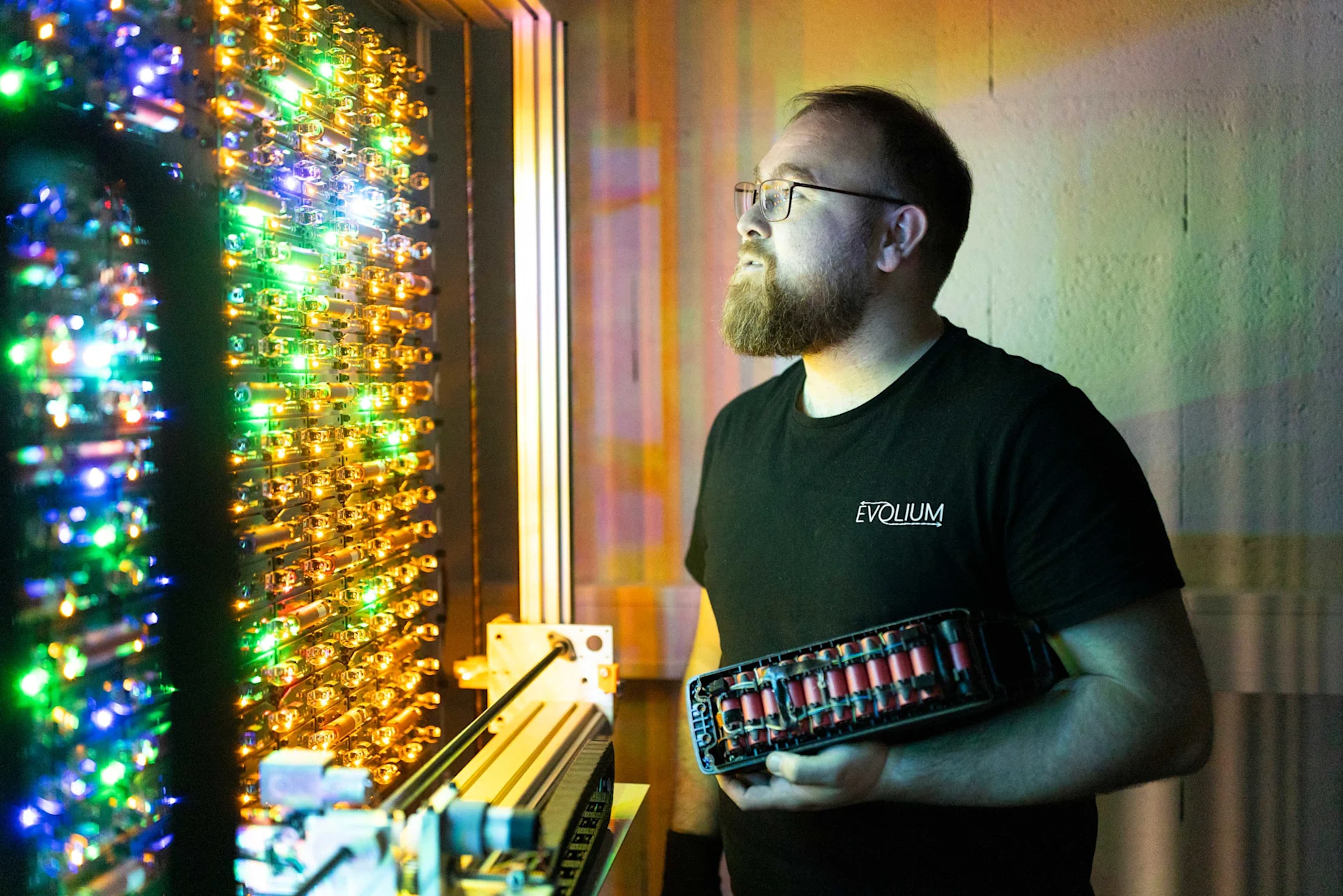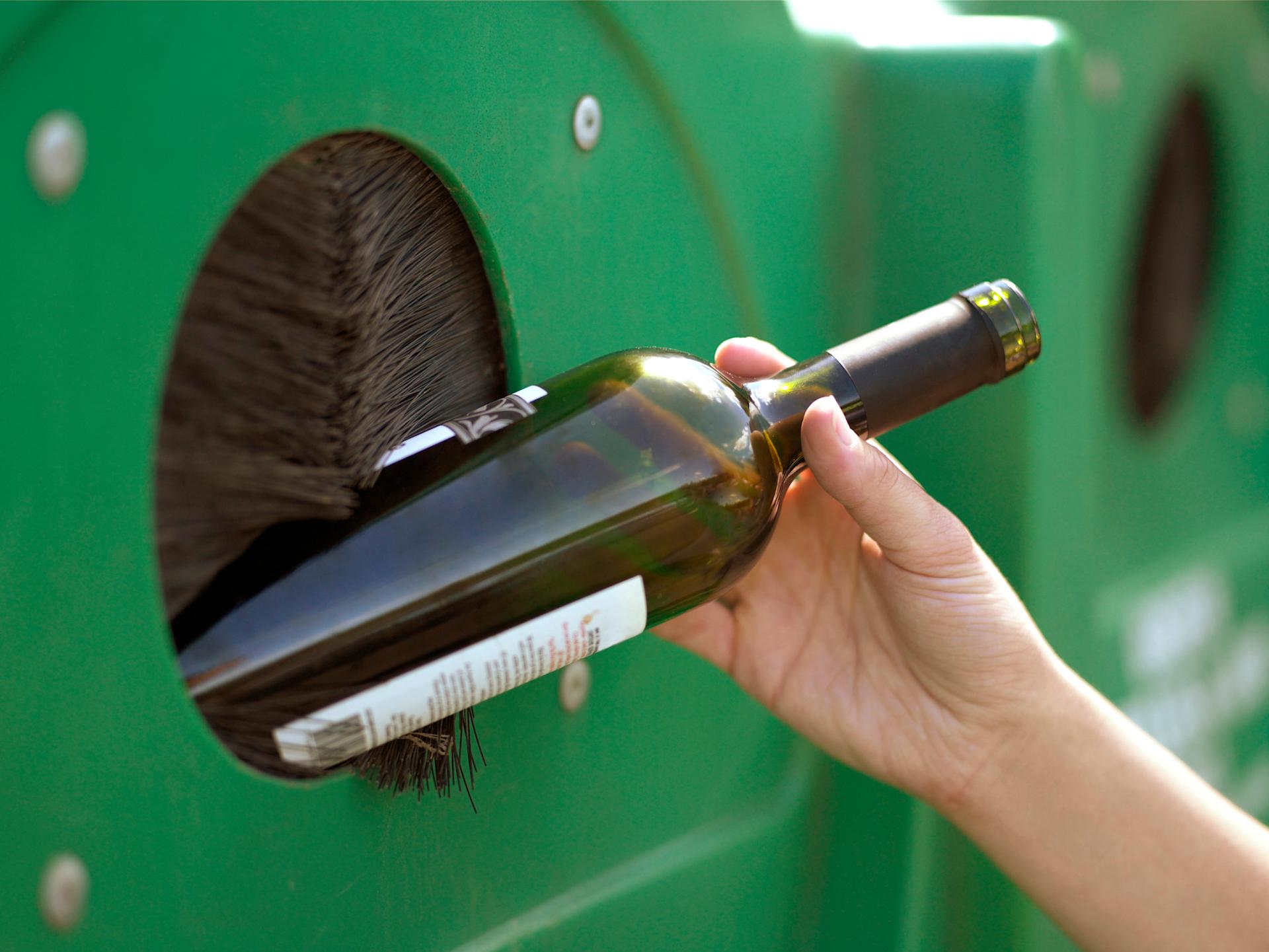
Migros Pioneer Fund
Rechargeable lithium batteries that last longer
With the support of the Migros Pioneer Fund, Evolium Technologies is extending the life of lithium batteries.
navigation

Circular economy
What actually belongs in the waste glass containers and what doesn't? And why should you separate glass bottles according to their colour? An overview.
There are approximately 22,000 waste glass containers in Switzerland, which are used for the disposal of drinks, oil and vinegar bottles as well as glass food packaging. This packaging can include jam, honey, yoghurt, pickle, and spice jars.
If other materials are disposed of in the waste glass containers, these must be sorted out in a complex process involving numerous processing steps. This makes glass recycling unnecessarily expensive and can result in substandard goods. To prevent this from happening, you should not throw any caps or covers in the containers. Drinks glasses, vases, glass bowls, mirrors, window panes, and car windscreens must not be disposed of in the waste glass containers, as they have a different chemical composition than packaging glass. These belong in the rubbish bin together with objects made from metal, ceramic, porcelain, and clay. You can dispose of dead light bulbs and other lamps for free at collection points.
Glass is almost the perfect material for recycling. It can be melted down over and over again and moulded into new packaging. However, if glass ends up in the household waste, it won't melt, as the temperature at which residual waste is incinerated – 800°C – is considerably lower than the temperature used for glass.
You no longer have to worry about the arduous task of scratching off labels. «Why is that?» I hear you say. In the preparation process for recycling waste glass, lightweight materials such as paper are vacuumed off. And if there are still any residues left on the glass afterwards, they will quickly burn up in the melting furnace, which can reach temperatures of up to 1580°C.
Bottles and packaging glass should be rinsed out quickly with cold water for hygiene reasons. Leftover food in glass jars is particularly problematic in the summer, as they will attract a large number of insects. This is unpleasant in the area around the containers – as well as for the people who will handle the glass in a later part of the process.
Honey jars should be rinsed out particularly thoroughly before being disposed of in the waste glass containers. This is a protective measure for bees that may be attracted to the honey in the containers, as leftover honey can contain pathogens for the brood disease «American foul brood». This is a bacterial disease that can kill off entire colonies of bees, but does not pose a threat to humans.
From an ecological perspective, plastic bottles normally cause less damage to the environment than glass bottles. The weight of the packaging has the biggest influence on how environmentally friendly it is. The higher packaging weight impacts the entire value chain –from manufacture and transport to disposal. This speaks in favour of using plastic bottles instead when you look at the big picture.
Do you know what can go in the bin? With our tips and tricks, recycling not only becomes easy, you also save a lot of waste.